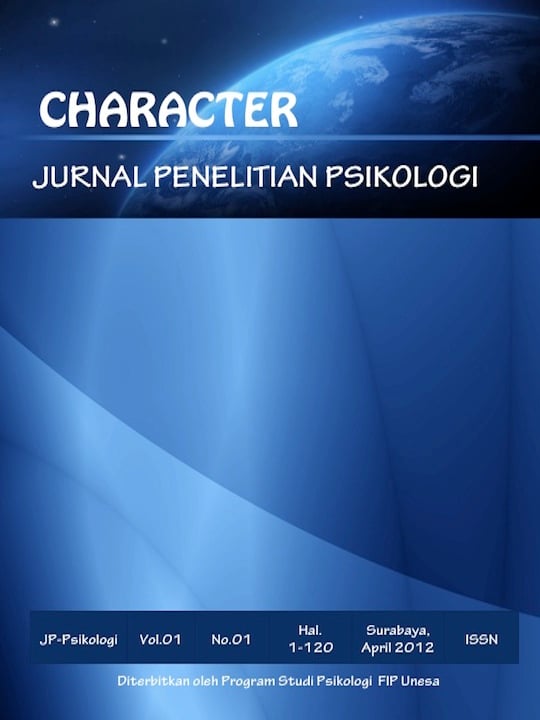PERBEDAAN KOMITMEN ORGANISASI DITINJAU DARI JENIS KELAMIN PADA KARYAWAN BAGIAN PRODUKSI
DOI:
https://doi.org/10.26740/cjpp.v8i3.41288Abstract
Abstrak
Perusahaan memerlukan karyawan yang memiliki dedikasi penuh untuk merealisasikan visi misi yang tercipta diperusahaan. Proses merealisasikan visi misi pada suatu perusahaan membutuhkan karyawan yang memiliki komitmen terhadap perusahaan. Perusahaan akan lebih mudah merealisasikan visi misinya jika semua karyawan memiliki komitmen organisasi. Penelitian ini bertujuan untuk mengetahui mengenai perbedaan komitmen organisasi ditinjau dari jenis kelamin pada karyawan bagian produksi. Penelitian ini menggunakan metode kuantitatif dengan metode pengumpulan data berupa skala komitmen organisasi. Populasi penelitian ini menggunakan 60 karyawan dengan proposi 30 karyawan berjenis kelamin laki laki dan 30 karyawan berjenis kelamin perempuan. Instrumen yang digunakan pada penelitian ini menggunakan skala komitmen organisasi. Teknik analisis data yang digunakan adalah uji beda. Hasil uji analisis uji beda adalah ada perbedaan komitmen organisasi ditinjau dari jenis kelamin karyawan bagian produksi (F= 0,003, p< 0,05). Berdasarkan hasil dari analisis data, diperoleh kesimpulan bahwa terdapat perbedaan komitmen organisasi antara karyawan perempuan dengan karyawan laki laki, dimana terdapat perbedaan pada dimensi afektif antara karyawan perempuan dan karyawan laki laki, begitupun pada dimensi kelanjutan dan normatif. Dengan demikian, hipotesis yang menyatakan bahwa terdapat perbedaan komitmen organisasi antara kelompok perempuan dan kelompok laki laki diterima.
Kata kunci: Komitmen Organisasi, Jenis Kelamin, Karyawan Produksi
Abstract
Companies need employees who are fully dedicated to realizing the vision and mission created in the company. The process of realizing the vision and mission of a company certainly requires employees who are fully committed to the company. The company will more easily realize its vision and mission if all employees have organizational commitment. This study aims to determine differences in organizational commitment in terms of gender in production employees. This study uses quantitative methods with data collection methods in the form of organizational commitment scale. The population of this study used 60 employees with a proportion of 30 male employees and 30 female employees. The instrument used in this study uses an organizational commitment scale. The data analysis technique used is a different test. The result of the analysis of the different test is that there is a difference in organizational commitment in terms of the sex of the production staff (F= 0.003, p < 0.05). Based on the results of data analysis, it is concluded that there are differences in organizational commitment between female employees and male employees, where there are differences in the affective dimensions between female employees and male employees, as well as on the continuance and normative dimensions. Thus, the hypothesis which states that there are differences in organizational commitment between women's groups and men's groups is accepted.
Keywords: Organizational Commitment, Gender, Production Employeess
Downloads
Downloads
Published
How to Cite
Issue
Section
License
Authors who publish in this journal agree to the following terms:
Copyright in any article is held by the author.
The author grants the journal, publication rights with the work simultaneously licensed under a Creative Commons Attribution License that allows others to share the work with an acknowledgment of the work's authorship and initial publication in this journal.
Authors may enter into separate, additional contractual arrangements for the non-exclusive distribution of the journal's published version of the work (e.g., posting it to an institutional repository or publishing it in a book), with an acknowledgment of its initial publication in this journal.
Authors are permitted and encouraged to post their work online (e.g., in an institutional repository or on their website) prior to and during the submission process, as this can lead to productive exchanges, as well as earlier and greater citation of published work.
 Abstract views: 473
,
Abstract views: 473
, PDF Downloads: 948
PDF Downloads: 948





